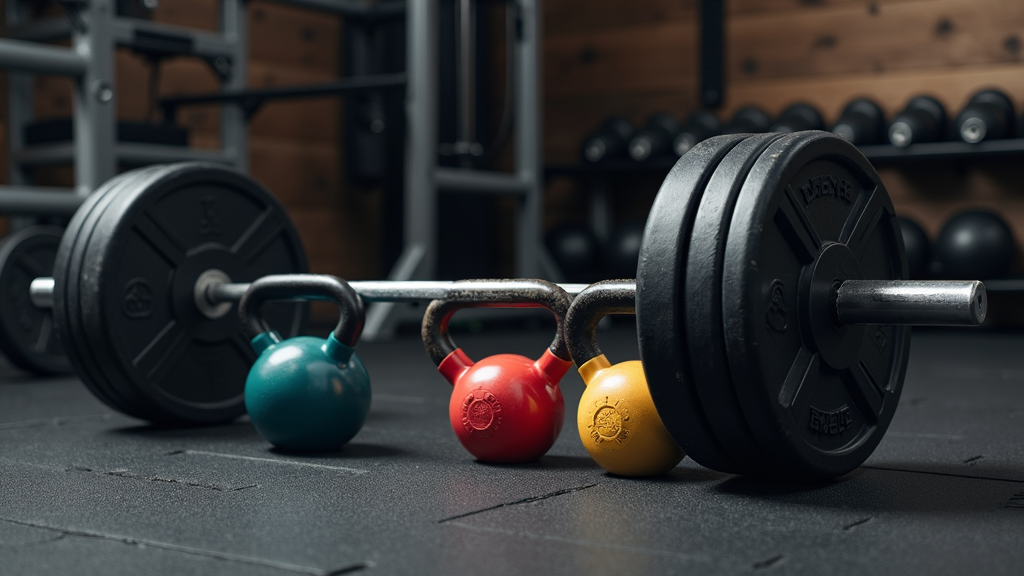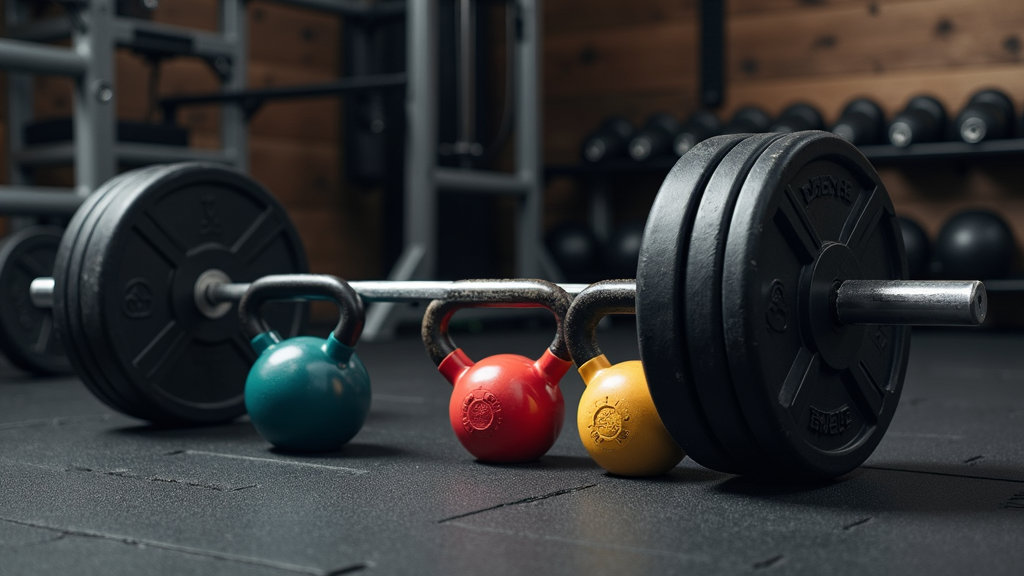Strength training is essential for athletic performance and can’t be skipped if your goal is to step up in your sport. Functional strength doesn’t just mean lifting heavy—it’s about moving with purpose, staying healthy, and building practical power you can tap into when the game’s on the line. I notice athletes who train smarter, not just harder, usually advance faster and recover from setbacks with less hassle. Modern athletic training leans heavily into this “strong but agile” approach for solid results.

Why Athletes Need Strength Training
Holding a solid strength foundation helps athletes do a lot more than just sprinting faster or jumping higher. It helps keep injuries away, offers better joint stability, and builds resilience. That’s really useful in both competition and long training seasons. Nowadays, top coaches mix strength with explosive moves, so you get a blend of power and athleticism. The main focus is always on compound lifts and movements that translate directly to action on the field, the court, or track—not just in the gym.
I put together this list to cover exercises that hit the major muscle groups, put focus on both sides of the body (think singleleg or singlearm work), and deliver performance benefits you can spot in game situations. If you want lifts that matter for athletes, these ten are the backbone of a strong program.
Barbell Back Squat. Powerful Lower Body Foundation
The barbell back squat is the cornerstone move for building raw power in your legs and hips. Strong squats improve everything from running faster and jumping higher to wrestling for position during competitions. When you squat, your quads, glutes, hamstrings, and core all work together. These muscle groups play a major role in explosive movement and allaround output.
What I always look for is squat depth. Lowering down with good form helps build not just strength, but the kind of power you’ll need in game situations. Adding a pause at the bottom can fire up isometric strength and help you stay in control during scrambles, landings, and quick pivots.
Trap Bar Deadlift. Practical, Safer Strength Gains
The trap bar (or hex bar) deadlift is about picking up serious weight in a way that goes a little easier on your lower back than traditional deadlifts. I like it for most athletes, especially those who want to protect their backs for fast running or highimpact sports. This move loads your hamstrings, glutes, lower back, and even your traps. It’s a totalbody lift you’ll notice pays off outside the gym.
The movement looks a lot like the forceful push you need to sprint or jump, making it a favorite for football, soccer, or track athletes. If your goal is strength minus the risk of burnout and longterm wear, make room for this lift in your schedule.
Barbell Power Clean. Explosiveness for Sports
The barbell power clean blends strength with speed in a unique way. Teaching this lift always brings the focus to hip speed—that quick snap really gets the bar moving. Power cleans train your nervous system for explosive bursts, which athletes rely on for sprints, sudden direction changes, or quick reactions during games.
Good form easily outweighs piling on heavy weight here. Coaches love power cleans since they drive coordination, fast muscle firing, and overall athletic sharpness. If your sport demands acceleration or jumping, this lift carries real value for peak performance.
Bulgarian Split Squat. Stronger, More Balanced Legs
The Bulgarian split squat puts a spotlight on singleleg strength, perfect for patching up imbalances and building power that carries into running, cutting, or leaping off one leg. It helps improve your balance and keeps injuries away, especially in sports that rely on sidetoside movement.
This move hits your quads and glutes hard without placing much pressure on your back. Load it with dumbbells or a vest if you want to kick things up; but even bodyweight reps can make a big difference for muscle growth and leg stability.
Pullups. Bodyweight Back and Grip Strength
Pullups are a classic test of upper body strength and grip. I always encourage mixing up your style—go with standard, wide, chesttobar, or even Lsit variations. There aren’t many lifts that challenge your lats, arms, shoulders, grip, and core all in one move. For athletes in sports with pulling, grappling, or climbing, this move brings real benefits.
Try adding weight or explosive pullup variations (even clap pullups) to crank up the difficulty. A pullup contest is always a great way to make training more fun with your teammates.
Barbell Bench Press. Pushing Strength for Competition
The bench press is the benchmark for pressing strength. It matters for athletes who need to generate big pushes—think football players blocking opponents or wrestlers fighting for control. It’s not just a “show off” lift; it lets you practice generating force quickly and efficiently.
You can switch things up with bands, chains, or slow negatives, building even more power and control through every rep. Mixing in pushups is a smart call to keep your joints happy and build pressing volume too.
Romanian Deadlifts. Hamstring Strength and Injury Prevention
Romanian deadlifts (RDLs) force your hamstrings and glutes to take the load, way more than standard deadlifts do. I recommend them to build the kind of posterior strength that prevents hamstring pulls and gives a boost to your sprinting. That’s gold for track stars, soccer players, or anyone who needs power on demand.
RDLs step up your flexibility and make your muscles more useful in pressure situations. Adding them to your routine helps you stay injuryfree across long seasons.
Landmine Rotations. Strong, Explosive Core
Landmine rotations let you add resistance to twisting moves without putting your back at risk. Athletes in sports like baseball, golf, and combat sports find these variations useful for building dynamic core power that you can use in game play.
These exercises help you absorb and resist rotational forces, protecting your balance from being thrown off. They also build force transfer from lower to upper body, something nearly every sport relies on for top performance.
Sled Pushes. Power, Endurance, and Toughness
Sled pushes are your goto for developing power, acceleration, and grit in the same exercise. Pushing a weighted sled targets your legs, core, and grip—and will test your muscles and stamina together. The beauty of sled work is in its simplicity: any athlete can jump in and get results quickly.
You can vary sled work for strength by loading it up, move lighter for velocity, or walk backward for knee protection. Best of all, no steep learning curve means you can make sleds part of your regular programming without stress.
Extra: Farmer’s Walks. Grip and Core for RealWorld Strength
To help hit our word goal and give more practical tips, here’s one more exercise. Farmer’s walks are all about carrying heavy weights in each hand and walking for distance. This exercise lights up your grip, forearms, traps, and core. It’s also a sneaky way to build mental toughness—holding on as long as possible challenges strength and focus.
You can use dumbbells, kettlebells, or actual farmer’s walk handles. These are great for any athlete, especially those who need solid grip, like wrestlers, football players, or climbers.
Tips for Building Your Strength Training Program
Weaving these top lifts into your routine ensures you’re getting all the essentials for development as an athlete. A few simple rules can set you up for longterm success:
- Rotate Variations: Don’t run the same movements forever—switch up grips, foot placement, or resistance often to keep progressing.
- Prioritize Recovery: Good sleep, eating well, and taking easier “deload” weeks help your training stick and guard against burnout.
- Movement Quality: Fast, powerful lifts are only helpful if your form is dialed in. Keep technique sharp to make gains without injury.
- Track Progress: Writing down your lifts, sets, and reps helps spot trends and know when to push or scale back.
Remember, strength training pays off if you stay consistent without letting ego take over. Progress stacks up quickly for committed athletes. If these moves are new territory, consider working with a strength coach or watching reliable instruction videos to make sure you’re training safely and getting the most benefit.
Common Questions About Strength Training for Athletes
Question: How often should athletes strength train?
Answer: Usually, two to four sessions each week works well, but it depends on your sport and competitive season. When competition is hot, most athletes cut back a bit to keep from getting run down.
Question: What’s the best way to avoid injuries when lifting?
Answer: Warm up before every session, don’t slack on solid technique, and pick weights that you can handle safely. Listening to your body helps you stay healthy longterm.
Question: Are machines or free weights better for sports training?
Answer: Most athletes see the biggest benefits from free weights and bodyweight work, which build real world strength and skill. Machines have their place for isolation or rehab, but barbells, dumbbells, and the floor are your main tools for performance and athleticism.
What To Focus On as an Athlete Building Strength
Strength training isn’t about chasing size. It’s your toolkit for more speed, tighter movement, and a healthier, longer athletic career. The ten (plus one) exercises featured here are the major building blocks for performance, injury resistance, and keeping your body ready for anything. Every athlete, regardless of sport or level, grows from stronger basics: these improve joint health, running pace, and even your mental edge.
Top athletes—no matter how elite—keep circling back to fundamental lifts: squats, deadlifts, cleans, and bodyweight classics. Remember, it’s not about complexity; it’s about sharp technique, steady effort, and personalizing your plan. Stay focused, mix in variety, and you’ll see your results take off both on and off the field.

No Responses